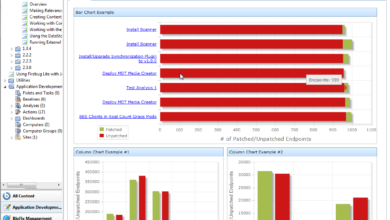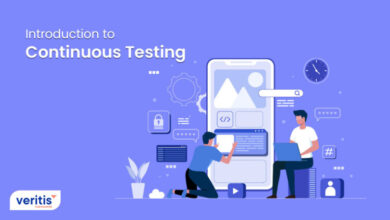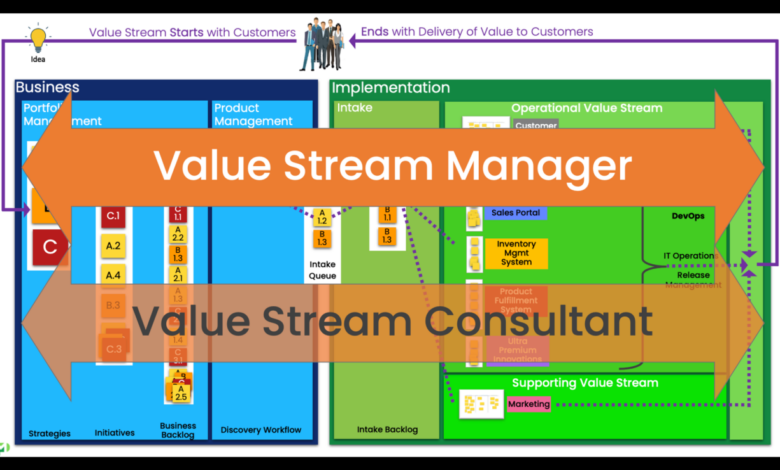
Business vs Development How Value Stream Management Fits In
Business vs development how value stream management fits in – Business vs Development: How Value Stream Management Fits In – that’s the million-dollar question many organizations grapple with. Bridging the gap between the often-conflicting worlds of business strategy and software development is a constant challenge. This post dives deep into how Value Stream Management (VSM) acts as the perfect bridge, fostering collaboration, improving efficiency, and ultimately, delivering more value faster.
We’ll explore the core principles of VSM, practical examples of its implementation, and how it directly addresses the common communication breakdowns and conflicting priorities between business and development teams.
We’ll examine how VSM helps align development efforts with overarching business goals, enhancing transparency and accountability throughout the entire process. From identifying bottlenecks to measuring the impact of VSM implementation, this post offers a practical guide to leveraging this powerful methodology to achieve remarkable results. Get ready to transform your development process and unlock a whole new level of efficiency!
Defining Business vs. Development
The seemingly simple question of “What’s the difference between business and development?” belies a complex reality within most organizations. Understanding this distinction, and the inherent tensions that can arise, is crucial for effective Value Stream Management. Business and development teams, while working towards a common goal (a successful product or service), often have vastly different perspectives, priorities, and ways of measuring success.Business teams focus on market needs, customer acquisition, revenue generation, and overall profitability.
Development teams, on the other hand, concentrate on building, testing, and deploying software or other products, emphasizing technical feasibility, scalability, and maintainability. These differing focuses often lead to friction if not carefully managed.
Goals and Priorities of Business and Development Teams
Business teams prioritize strategic goals such as market share, customer satisfaction (often measured through Net Promoter Score or CSAT), revenue growth, and return on investment (ROI). Their work involves market research, competitive analysis, sales forecasting, and strategic planning to achieve these objectives. Development teams, conversely, prioritize technical excellence, delivering features on time and within budget, code quality, security, and scalability.
Metrics like sprint velocity, bug count, code coverage, and deployment frequency are central to their performance evaluation.
Key Performance Indicators (KPIs)
The KPIs used to measure success differ significantly between the two. Business teams often track leading indicators like marketing qualified leads (MQLs), sales conversion rates, customer churn, and average revenue per user (ARPU). Development teams, however, rely heavily on lagging indicators such as deployment frequency, mean time to recovery (MTTR), defect density, and customer satisfaction scores related to product functionality.
This difference in focus on leading vs. lagging indicators often contributes to misalignment in understanding project success.
Common Conflicts and Communication Breakdowns
A common conflict arises from differing priorities. Business teams may push for rapid feature releases to meet market demands, potentially compromising software quality and long-term maintainability. Development teams, conversely, may resist pressure to rush features, prioritizing a robust and well-tested product. Communication breakdowns frequently stem from differing language and understanding. Business discussions often revolve around market trends and financial projections, while development discussions focus on technical details and code implementation.
This lack of common ground can lead to misunderstandings and missed deadlines.
Hypothetical Organizational Structure
A well-structured organization would incorporate a Product Owner role bridging the gap between business and development. This role would be responsible for translating business requirements into actionable user stories and prioritizing features based on both business value and technical feasibility. Reporting directly to a Product Manager (who oversees the overall product strategy), the Product Owner would work closely with both business stakeholders and the development team, facilitating clear communication and alignment.
This structure fosters a collaborative environment, ensuring both business goals and technical considerations are adequately addressed. A visual representation would show a hierarchical structure with the Product Manager at the top, the Product Owner in the middle, and separate Business Analysts and Development Teams reporting to the Product Owner. The lines of communication would be clearly defined, facilitating a smooth flow of information and reducing potential conflicts.
Value Stream Management (VSM) Fundamentals
Value Stream Management (VSM) is a crucial methodology for optimizing the flow of value from idea to delivery in software development. It focuses on identifying and eliminating waste, streamlining processes, and improving collaboration between business and development teams. By understanding and applying VSM principles, organizations can significantly enhance efficiency, speed up delivery, and improve overall product quality.VSM fundamentally shifts the focus from individual tasks to the entire process, treating the software development lifecycle as a continuous flow.
It emphasizes identifying bottlenecks, reducing lead times, and improving overall efficiency by mapping out the entire value stream and pinpointing areas for improvement. This holistic approach allows for a more strategic and effective optimization strategy compared to addressing individual issues in isolation.
Core Principles of VSM in Software Development
The core principles of VSM revolve around identifying and eliminating waste throughout the software development lifecycle. This involves mapping the entire process, from initial concept to deployment and maintenance, to visualize the flow of work and identify bottlenecks. Key principles include: defining value from the customer’s perspective, identifying and eliminating waste (such as rework, waiting, and unnecessary processes), creating a continuous flow of work, building feedback loops for continuous improvement, and empowering teams to make decisions and take ownership.
Applying these principles ensures a more efficient and effective software development process.
VSM Methodologies and Their Suitability
Several methodologies support VSM implementation, each with strengths suited to different project types. For example, Lean Software Development emphasizes waste elimination and continuous improvement, making it ideal for projects requiring high efficiency and agility. Kanban, with its focus on visualizing workflow and limiting work in progress, is well-suited for projects needing flexibility and adaptability. Scrum, a framework for iterative development, can be integrated with VSM to enhance transparency and collaboration.
Choosing the right methodology depends on the specific project context, team structure, and organizational goals.
Typical VSM Implementation Process Flow
Imagine a process flow diagram illustrating a typical VSM implementation. The diagram would begin with the “Idea Generation” stage, followed by “Requirements Gathering,” “Design,” “Development,” “Testing,” “Deployment,” and finally, “Maintenance & Feedback.” Each stage would be represented by a box, with arrows connecting them to show the flow of work. Bottlenecks and areas of waste would be highlighted, visually demonstrating where improvements can be made.
The diagram would also show feedback loops at various points, allowing for continuous improvement and adaptation throughout the process. The overall visual representation would clearly depict the entire value stream, highlighting dependencies and potential areas for optimization. This visual representation allows for easy identification of areas for improvement and fosters collaborative problem-solving.
Benefits and Challenges of Implementing VSM
| Benefit | Challenge | Benefit | Challenge |
|---|---|---|---|
| Increased efficiency and reduced lead times | Resistance to change from team members | Improved collaboration and communication | Difficulty in accurately measuring value |
| Enhanced product quality and customer satisfaction | Need for dedicated resources and training | Better visibility into the development process | Maintaining momentum and continuous improvement |
| Reduced costs and improved ROI | Complexity in mapping and analyzing the value stream | Increased agility and adaptability | Lack of management support |
VSM’s Role in Bridging the Business-Development Gap
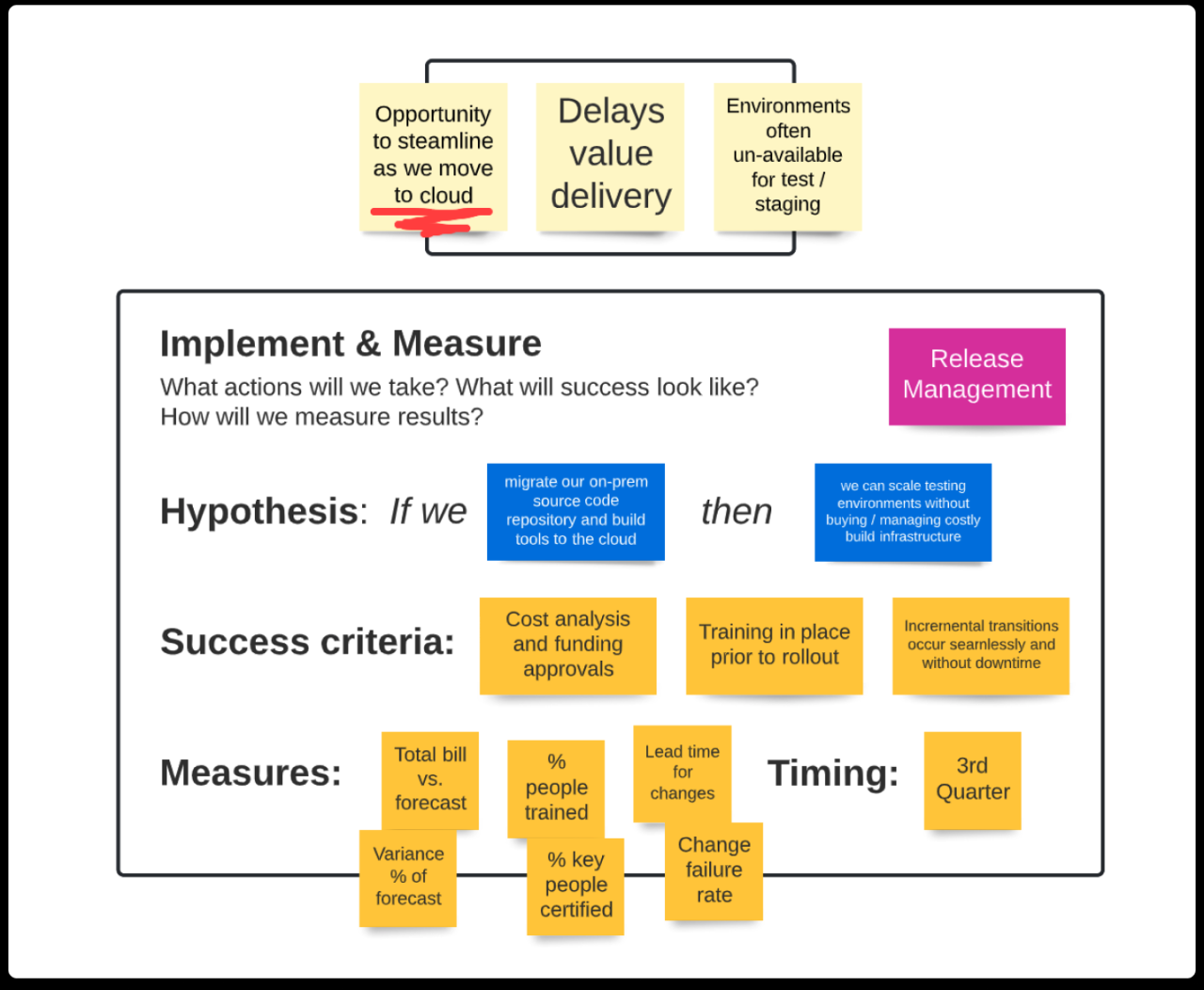
Value Stream Management (VSM) isn’t just a buzzword; it’s a powerful methodology that acts as a crucial bridge, connecting the often-siloed worlds of business and development. By providing a shared language and a unified view of the entire product lifecycle, VSM fosters collaboration, transparency, and ultimately, faster delivery of value to the customer. This is achieved by aligning development efforts directly with overarching business goals, resulting in more efficient resource allocation and reduced waste.VSM improves communication and collaboration between business and development by providing a common platform for understanding the entire value stream.
This shared understanding eliminates the communication bottlenecks and misunderstandings that often arise when teams operate in isolation. Instead of relying on fragmented information and assumptions, both business and development teams can see the same data, track progress together, and identify potential roadblocks proactively. This shared visualization fosters a sense of shared ownership and responsibility, leading to improved teamwork and a more collaborative environment.
VSM’s Alignment of Development Efforts with Business Objectives
VSM achieves alignment by making business objectives visible and tangible throughout the development process. Key performance indicators (KPIs) directly tied to business goals are integrated into the VSM framework, providing a clear roadmap for development teams. This ensures that development efforts are focused on delivering features and functionalities that directly contribute to the achievement of those goals. For example, if a business objective is to increase customer acquisition by 20%, VSM can track the development of features directly impacting customer acquisition, such as a streamlined onboarding process or improved user interface, and measure their effectiveness against the target.
This constant feedback loop ensures development stays aligned and avoids working on features with low business impact.
VSM’s Enhancement of Transparency and Accountability Across Teams, Business vs development how value stream management fits in
Transparency is a cornerstone of effective VSM. By providing a single source of truth for all relevant data, VSM ensures that everyone – from business stakeholders to developers – has access to the information they need to make informed decisions. This eliminates the guesswork and reduces the risk of misunderstandings. Furthermore, the clear visibility of progress and bottlenecks promotes accountability.
Teams are held responsible for their contributions to the overall value stream, encouraging them to proactively identify and resolve issues. This transparency extends to identifying bottlenecks, highlighting areas for improvement, and fostering a culture of continuous improvement.
Case Study: Streamlining Software Deployment at a Fintech Startup
A fintech startup struggling with lengthy software deployment cycles and inconsistent releases implemented VSM. Previously, the development team worked independently, with limited communication with the business team. Deployment often took weeks, resulting in delays and missed market opportunities. By adopting VSM, the startup visualized the entire software deployment process, identifying bottlenecks such as lengthy testing phases and insufficient automation.
They implemented improvements such as automated testing and continuous integration/continuous deployment (CI/CD) pipelines. The result? Deployment times were reduced by 75%, leading to faster releases, improved customer satisfaction, and a significant increase in market share. This success showcases how VSM can transform a complex process into a streamlined, efficient operation, directly impacting the bottom line.
Optimizing the Value Stream with VSM
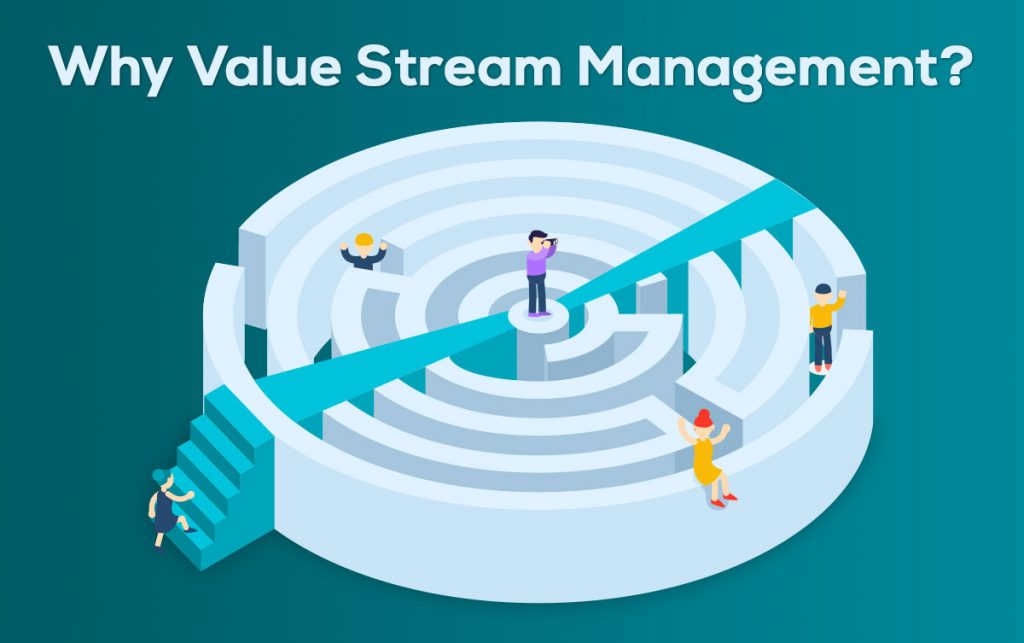
Value Stream Management (VSM) isn’t just about identifying problems; it’s about systematically improving the flow of value from idea to delivery. By meticulously mapping and analyzing the entire software development process, we can pinpoint bottlenecks and inefficiencies, ultimately leading to faster delivery, higher quality, and increased customer satisfaction. This involves a deep dive into understanding where time and resources are wasted, and then implementing strategies to eliminate those wastes.Optimizing the value stream requires a thorough understanding of common bottlenecks and inefficiencies within the software development lifecycle.
These often manifest as delays in handoffs between teams, excessive rework due to defects, long lead times for approvals, or a lack of clear communication and collaboration. By applying VSM techniques, we can systematically address these issues and improve the overall flow of work.
Common Bottlenecks and Inefficiencies
Software development projects frequently encounter bottlenecks at various stages. For example, lengthy code reviews can delay progress, while unclear requirements can lead to rework and wasted effort. Integration issues, arising from disparate systems or incompatible code, are also common culprits. Testing bottlenecks, whether due to inadequate test coverage or slow test execution, often delay releases. Finally, deployment delays, stemming from complex deployment procedures or lack of automated processes, can significantly impact time-to-market.
These bottlenecks, if left unaddressed, cumulatively impact project timelines and budgets.
Eliminating Waste and Improving Flow Through VSM Techniques
VSM uses a variety of techniques to identify and eliminate waste. One crucial technique is value stream mapping, a visual representation of the entire process, highlighting all activities and their associated lead times. This map allows teams to identify areas of waste, such as unnecessary steps, waiting times, and defects. Kanban boards, a visual workflow management system, help manage work in progress and improve flow.
Limiting work in progress (WIP) prevents bottlenecks and allows for faster cycle times. Lean principles, such as eliminating waste and empowering teams, are integral to VSM’s effectiveness. Continuous improvement practices, like regular retrospectives and feedback loops, ensure ongoing optimization. These techniques, when implemented correctly, create a more efficient and responsive development process.
Tools and Technologies Supporting VSM Implementation
Several tools and technologies facilitate VSM implementation. Jira and Azure DevOps provide project management capabilities, including Kanban boards and workflow visualization. These tools track progress, identify bottlenecks, and facilitate collaboration. Prometheus and Grafana offer monitoring and visualization of system performance metrics, enabling identification of technical bottlenecks. Automated testing frameworks, such as Selenium and JUnit, improve testing efficiency and reduce delays.
Continuous Integration/Continuous Delivery (CI/CD) pipelines, using tools like Jenkins or GitLab CI, automate the build, test, and deployment process, reducing manual effort and accelerating delivery. These tools, when integrated effectively, create a powerful ecosystem for optimizing the software development value stream.
Workflow Improvement Plan: Hypothetical Project
Let’s consider a hypothetical project: developing a mobile application for online ordering. The current process involves separate teams for design, development, testing, and deployment. Handoffs between these teams are manual and often lead to delays. Using VSM, we can map the current state, revealing significant bottlenecks in the testing and deployment phases. Our improvement plan will focus on implementing a CI/CD pipeline, automating testing, and adopting a Kanban system to manage work flow.
By automating testing, we reduce the testing bottleneck. A Kanban system will help visualize workflow and limit work in progress, preventing delays due to context switching. The CI/CD pipeline will automate deployment, reducing manual intervention and deployment time. This integrated approach, guided by VSM principles, will significantly improve the efficiency and speed of the development process.
Regular retrospectives will further refine the process based on continuous feedback.
Measuring the Impact of VSM: Business Vs Development How Value Stream Management Fits In
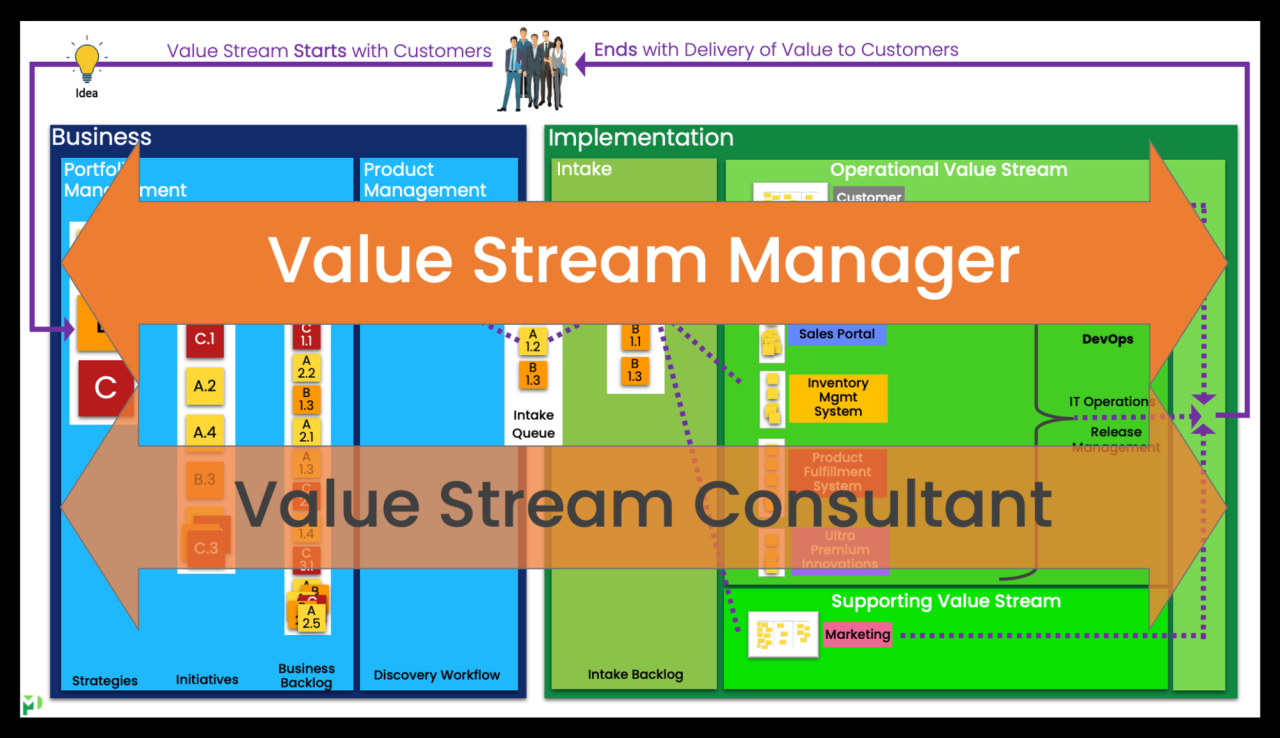
Implementing Value Stream Management (VSM) isn’t just about making changes; it’s about demonstrably improving performance. Measuring the impact ensures you’re getting a return on your investment and allows for continuous improvement. This involves tracking key metrics, visualizing the data effectively, and ultimately, quantifying the ROI.
Key Metrics for Tracking VSM Effectiveness
Several key metrics can effectively track VSM implementation success. These metrics provide a comprehensive view of improvements across different aspects of the value stream. Focusing on a few key indicators initially avoids getting bogged down in too much data.
- Lead Time: This measures the total time it takes to deliver a product or service from initiation to completion. A reduction in lead time indicates improved efficiency and faster delivery.
- Cycle Time: This metric tracks the time spent actively working on a specific task within the value stream. Reducing cycle time points to process optimization and reduced waste.
- Throughput: This represents the rate at which the value stream delivers completed products or services. An increase signifies higher productivity and capacity.
- Defect Rate: Measuring the percentage of defective products or services identifies areas needing improvement in quality control. Lower defect rates demonstrate enhanced quality and reduced rework.
- Inventory Levels: Tracking work-in-progress (WIP) and finished goods inventory helps identify bottlenecks and excess inventory. Reduced inventory levels indicate improved flow and reduced waste.
Visualizing and Reporting on VSM Data
Data visualization is crucial for effectively communicating the impact of VSM. Various methods can help illustrate progress and highlight areas for improvement.
Dashboards: Real-time dashboards displaying key metrics like lead time, cycle time, and throughput provide a quick overview of performance. Using color-coding to highlight areas needing attention enhances visibility.
Charts and Graphs: Line charts can track trends in metrics over time, showing the impact of VSM initiatives. Bar charts can compare performance across different teams or value streams. Scatter plots can identify correlations between different metrics.
Kanban Boards: Visualizing the workflow using a Kanban board allows for real-time monitoring of progress and identification of bottlenecks. This provides a clear picture of the current state of the value stream.
Return on Investment (ROI) of VSM
Calculating the ROI of VSM requires comparing the costs of implementation with the benefits achieved. The benefits often include reduced lead times, improved quality, and increased throughput, all of which translate to cost savings and increased revenue.
For example, a company might invest $50,000 in VSM implementation. If the resulting reduction in lead time leads to a $100,000 increase in revenue within a year, the ROI would be 100%. Additionally, reduced defect rates and inventory costs contribute further to the overall ROI.
It’s important to consider both tangible and intangible benefits. Tangible benefits include reduced costs, increased revenue, and improved efficiency. Intangible benefits include improved employee morale, increased customer satisfaction, and enhanced agility.
Illustrative Presentation of VSM Benefits
Chart 1: Lead Time Reduction
-A line graph showing a significant decrease in lead time after VSM implementation. The X-axis represents time (months), and the Y-axis represents lead time (days). The graph would show a clear downward trend after the implementation date, demonstrating a reduction from, for example, 30 days to 15 days. Caption: Significant reduction in lead time post VSM implementation, demonstrating improved efficiency and faster delivery.
Chart 2: Throughput Increase
-A bar chart comparing throughput before and after VSM implementation. The X-axis shows “Before VSM” and “After VSM,” while the Y-axis represents the number of units produced per week. The bar for “After VSM” would be significantly taller, illustrating increased productivity. Caption: Improved throughput post VSM implementation, demonstrating increased productivity and capacity.
Chart 3: Defect Rate Reduction
-A line graph showing a decrease in the defect rate over time after VSM implementation. The X-axis represents time (months), and the Y-axis represents the defect rate (percentage). The graph would illustrate a downward trend, indicating improved quality control. Caption: Consistent reduction in defect rate post VSM implementation, showcasing enhanced quality and reduced rework.
Challenges and Considerations in VSM Adoption
Implementing Value Stream Management (VSM) isn’t a simple switch-flip; it requires a significant organizational shift. Success hinges on overcoming various hurdles, from ingrained resistance to change to a lack of necessary resources. Understanding these challenges upfront is crucial for a smooth and effective implementation.
Potential Obstacles to Successful VSM Implementation
Several obstacles can hinder the successful adoption of VSM. These range from a lack of executive sponsorship and insufficient data visibility to poorly defined value streams and inadequate training. Addressing these proactively is vital for minimizing disruption and maximizing the return on investment.
- Lack of Executive Sponsorship: Without buy-in from leadership, VSM initiatives often lack the necessary resources and prioritization.
- Resistance to Change: Established processes and ingrained ways of working can create resistance from teams accustomed to their current methods.
- Insufficient Data Visibility: VSM relies on accurate data to identify bottlenecks and inefficiencies. Without a robust data collection and analysis system, progress will be hampered.
- Poorly Defined Value Streams: Clearly defining the value streams is fundamental. Ambiguity here leads to confusion and inefficient efforts.
- Inadequate Training and Skill Development: Successful VSM implementation requires employees to understand and utilize new tools and processes. Insufficient training undermines this.
- Lack of Cross-Functional Collaboration: VSM necessitates close collaboration across departments. Siloed working prevents the holistic view crucial for optimization.
- Technology Limitations: The right tools are essential. Legacy systems or insufficient technology can impede data integration and analysis.
Strategies for Overcoming Resistance to Change
Overcoming resistance to change is paramount. This involves transparent communication, demonstrating the benefits of VSM, and engaging employees throughout the process. A phased approach and clear success metrics can build momentum and support.
Open communication is key. Clearly articulating the “why” behind VSM adoption, highlighting the benefits for both the organization and individual employees, can alleviate concerns. Involving employees in the process, soliciting feedback, and addressing their concerns directly fosters a sense of ownership and buy-in. Showcasing early successes through clear metrics builds confidence and momentum. A phased approach allows for incremental changes, minimizing disruption and providing opportunities for adaptation and refinement.
Necessary Resources and Expertise for Effective VSM Adoption
Successful VSM adoption requires a combination of resources and expertise. This includes dedicated personnel with VSM knowledge, appropriate software tools, and access to relevant data.
A dedicated team with expertise in process improvement methodologies like Lean and Six Sigma is essential. This team will lead the VSM implementation, facilitate workshops, and train employees. Appropriate software tools for mapping value streams, collecting data, and analyzing performance are crucial. Access to reliable and accurate data from across the organization is also vital for effective analysis and optimization.
Furthermore, executive sponsorship and budget allocation are necessary for acquiring the necessary resources and expertise.
Checklist for Evaluating Organizational Readiness for VSM Implementation
Before embarking on a VSM journey, assessing organizational readiness is crucial. This checklist helps determine whether the organization possesses the necessary prerequisites for successful implementation.
- Executive Sponsorship: Is there clear and consistent support from senior leadership?
- Data Availability: Does the organization have access to the necessary data to map value streams?
- Cross-Functional Collaboration: Is there a culture of collaboration across different departments?
- Process Understanding: Is there a clear understanding of current processes and workflows?
- Employee Buy-in: Are employees receptive to change and new methodologies?
- Resource Allocation: Are sufficient resources (budget, personnel, technology) allocated?
- Defined Value Streams: Are the key value streams clearly identified and understood?
End of Discussion
Ultimately, Value Stream Management isn’t just about optimizing software development; it’s about aligning the entire organization towards a shared vision of success. By fostering collaboration, transparency, and a data-driven approach, VSM empowers businesses to deliver exceptional value to their customers. While implementing VSM requires careful planning and a commitment to change, the potential rewards – increased efficiency, reduced waste, and improved customer satisfaction – make it a worthwhile investment.
So, are you ready to bridge the gap between business and development and unlock the true potential of your organization? Let’s get started!
Essential FAQs
What are some common obstacles to VSM implementation?
Resistance to change from teams accustomed to old ways of working, lack of executive sponsorship, insufficient data visibility, and inadequate training are all common hurdles.
How can I measure the ROI of VSM?
Track key metrics like lead time reduction, cycle time improvement, defect rate, and customer satisfaction. Compare these metrics before and after VSM implementation to quantify the improvement.
What tools can support VSM implementation?
Many tools exist, ranging from simple spreadsheets to sophisticated project management and analytics platforms. The best choice depends on your organization’s needs and scale.
Is VSM suitable for all organizations?
While VSM benefits most organizations, its suitability depends on factors like organizational structure, team maturity, and the complexity of the development process. A thorough assessment is recommended.
